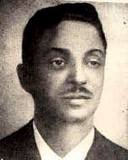4.3.6 The novels of Félix Soloni (1900 – 1968)

Félix Soloni was an empirical journalist with a vast career, which included forays into film, music, and a prolific body of work as a translator. His literary work is primarily focused on newspaper serials, with structures in which purely aesthetic considerations are subordinated to commercial considerations, achieving a mass readership and sustaining their attention over successive issues. This does not mean that he didn’t possess a certain talent, not fully realized under these circumstances.
Her two novels that have passed into posterity were published in 1926, under the subtitle “Novela Criolla”, with the titles “Mersé” and “Virulilla”, undoubtedly biased by the requirements of the serial novel and the handling of the endings – more credible in the case of the first – in both, however, the theme of the situation of women in neglected conditions is plausible and a portrait of society in its most acute dichotomies.
“Mersé,” whose title is also the name of the main female character, is set in the sprawl of Havana’s suburbs and tenements, with a certain critical tone toward the marginalized situation that stems from the economic status of other social sectors. The main theme is racial discrimination, so pervasive that even the protagonist, who is Black, feels alienated from her cultural heritage, ancestral customs, and her own members of the race, and this uprooting drives her to the point of suicide.
For her part, in “Virulilla,” Soloni delves into the work and cultural spaces of working-class women, with a thesis simultaneously against exploitation and in defense of women’s right to work. However, the eventual marriage of one of these women to the factory owner, purely formal, constitutes in a certain way a thesis of concord that would not help to truly resolve the conflicts arising from the deep social divide between owners and dispossessed.
In general, Soloni’s novels failed to transgress the canons of serial fiction or delve deeply into the conflicts faced by women of different social statuses; however, I nevertheless attempt to offer a critical account of her time. Her journalistic work included various media outlets, including La Prensa, El Mundo, El País, La Discusión, Mundial, Carteles, and Bohemia, among others.








